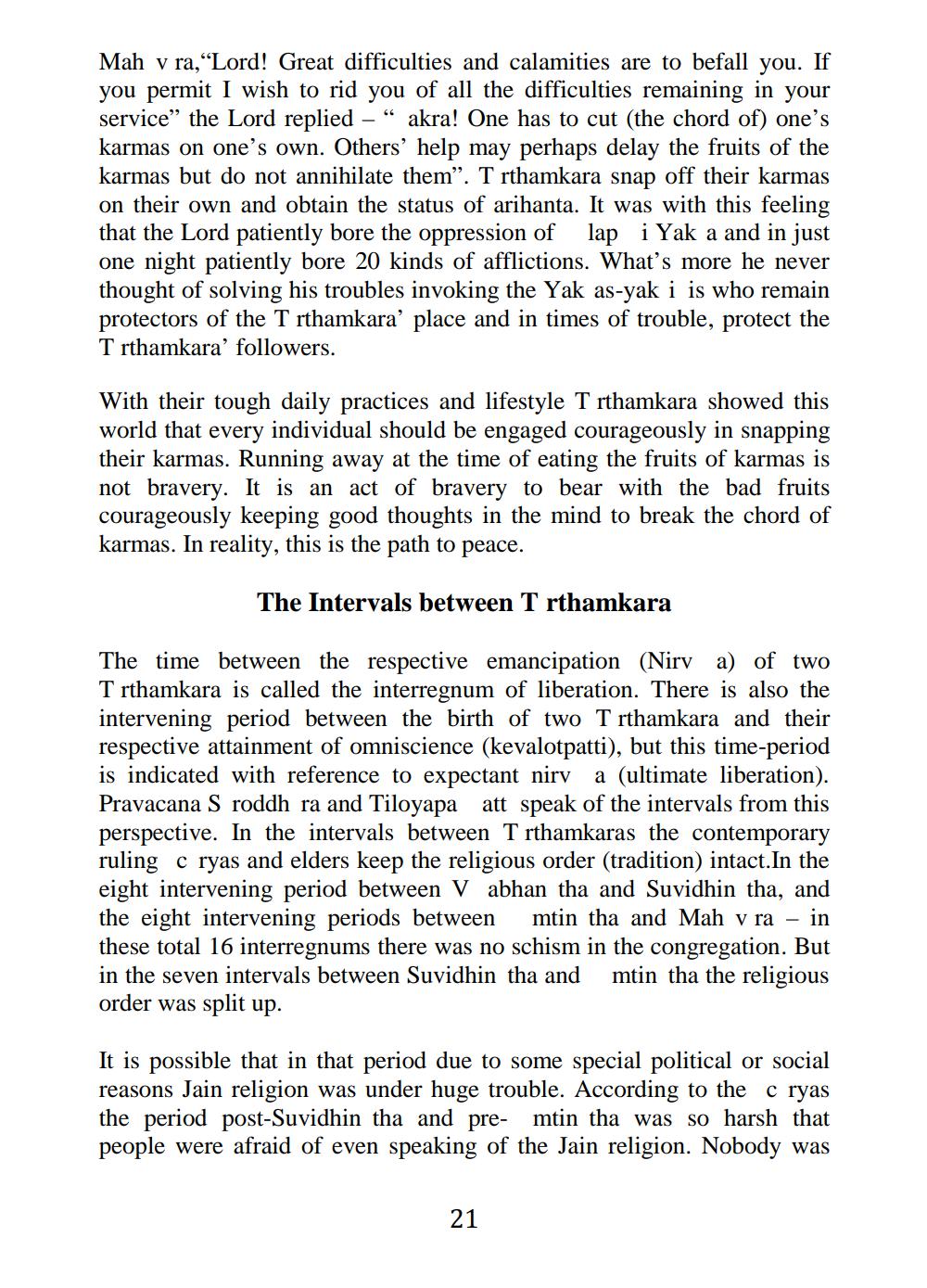________________
Mah v ra, “Lord! Great difficulties and calamities are to befall you. If you permit I wish to rid you of all the difficulties remaining in your service” the Lord replied – “ akra! One has to cut (the chord of) one's karmas on one's own. Others' help may perhaps delay the fruits of the karmas but do not annihilate them”. T rthamkara snap off their karmas on their own and obtain the status of arihanta. It was with this feeling that the Lord patiently bore the oppression of lap i Yak a and in just one night patiently bore 20 kinds of afflictions. What's more he never thought of solving his troubles invoking the Yak as-yak i is who remain protectors of the T rthamkara' place and in times of trouble, protect the Trthamkara' followers.
With their tough daily practices and lifestyle T rthamkara showed this world that every individual should be engaged courageously in snapping their karmas. Running away at the time of eating the fruits of karmas is not bravery. It is an act of bravery to bear with the bad fruits courageously keeping good thoughts in the mind to break the chord of karmas. In reality, this is the path to peace.
The Intervals between T rthamkara
The time between the respective emancipation (Nirva) of two T rthamkara is called the interregnum of liberation. There is also the intervening period between the birth of two T rthamkara and their respective attainment of omniscience (kevalotpatti), but this time-period is indicated with reference to expectant nirva (ultimate liberation). Pravacana S roddh ra and Tiloyapa att speak of the intervals from this perspective. In the intervals between T rthamkaras the contemporary ruling c ryas and elders keep the religious order (tradition) intact. In the eight intervening period between V abhan tha and Suvidhin tha, and the eight intervening periods between mtin tha and Mah v ra – in these total 16 interregnums there was no schism in the congregation. But in the seven intervals between Suvidhin tha and mtin tha the religious order was split up.
It is possible that in that period due to some special political or social reasons Jain religion was under huge trouble. According to the c ryas the period post-Suvidhin tha and pre- mtin tha was so harsh that people were afraid of even speaking of the Jain religion. Nobody was
21




